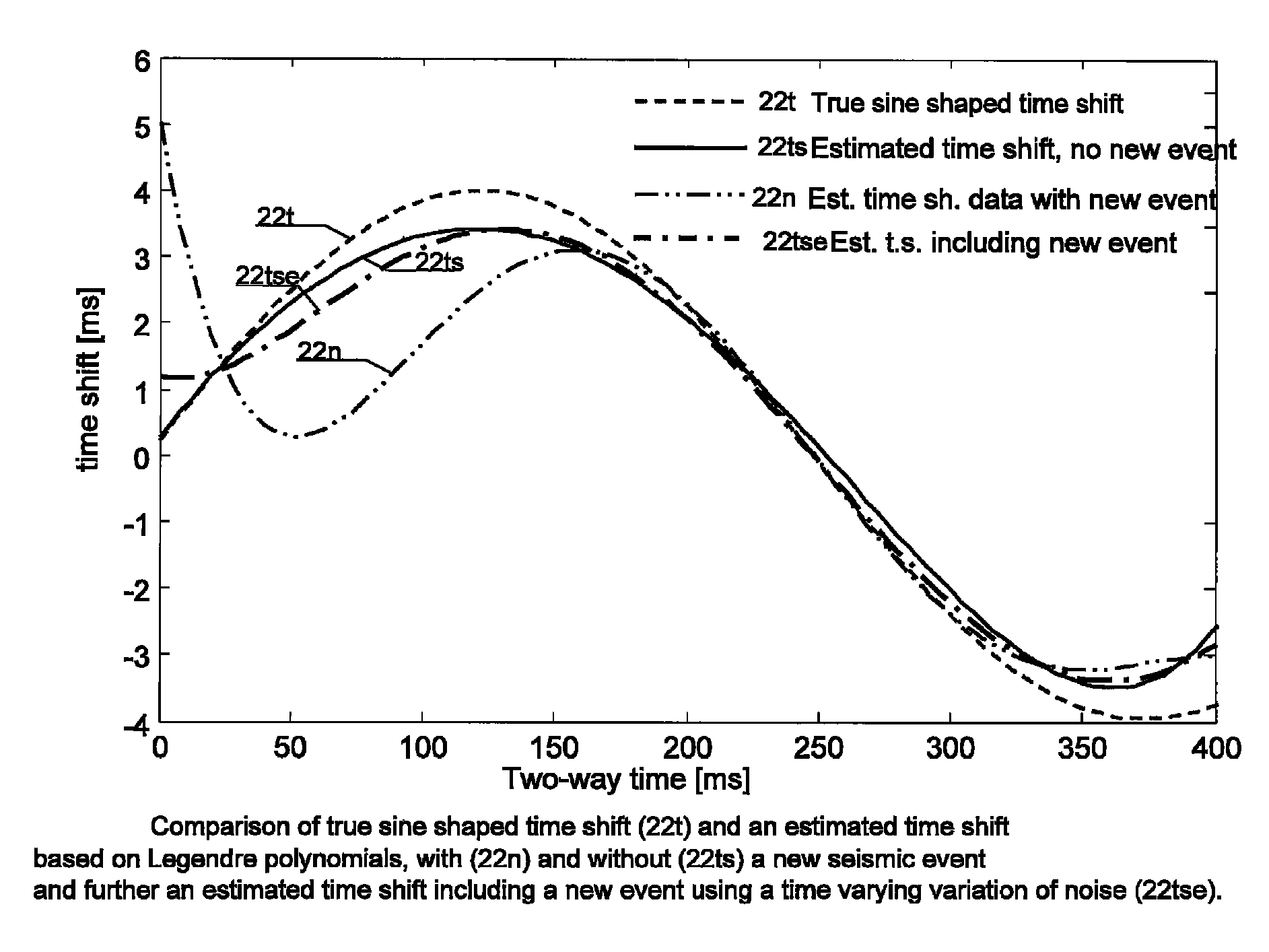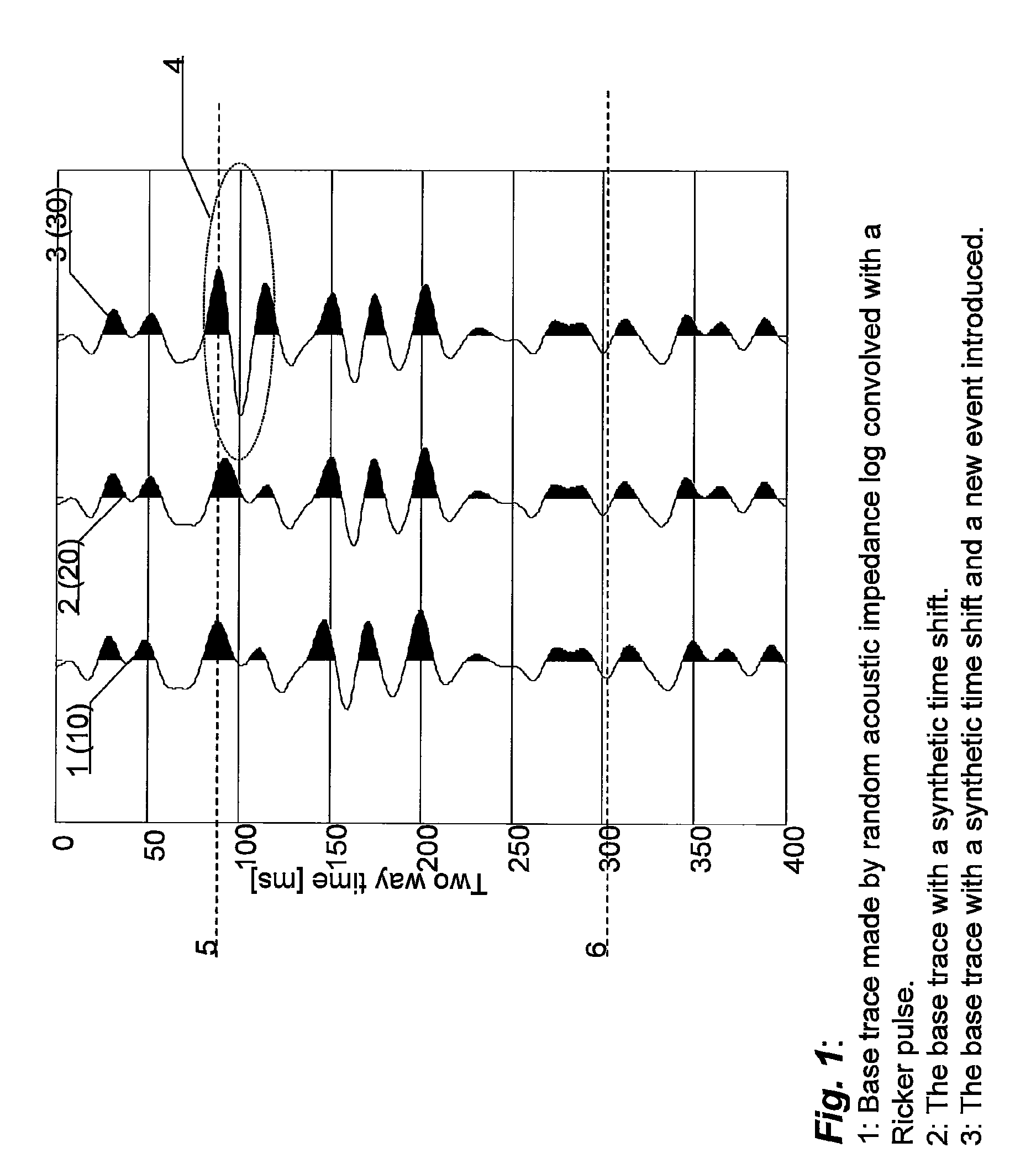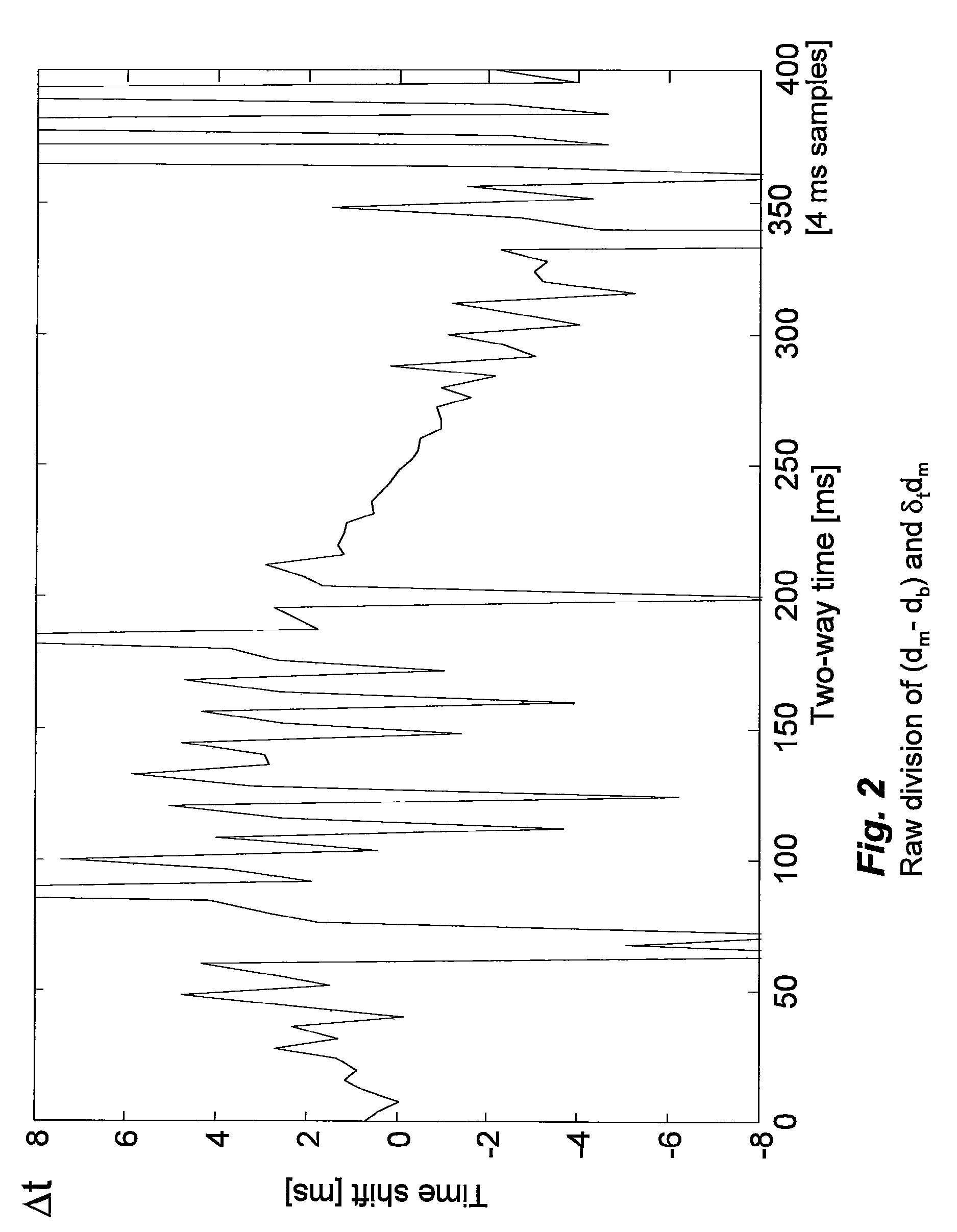Method for reflection time shift matching a first and a second set of seismic reflection data
a technology of reflection data and time shift, applied in the field of reflection time shift matching a, can solve the problems of inability to tolerate new seismic events, forcing the displacement of other seismic events in the seismic data time set in an inappropriate way,
- Summary
- Abstract
- Description
- Claims
- Application Information
AI Technical Summary
Benefits of technology
Problems solved by technology
Method used
Image
Examples
Embodiment Construction
[0035]A base reflection trace 1 is formed by making a random acoustic impedance log of an imagined or real geological column. Each layer's acoustic impedance is the acoustic velocity multiplied by the density. The random impedance log used here has been convolved with a Ricker pulse, and is illustrated by 1 in the left third of FIG. 1. The random reflection trace 1 so produced is imagined to having been acquired at a first time t0. The middle trace indicated by reference numeral 2 is the same randomly made base trace, but given a synthetic time shift, here a sine function time displacement. The time shifted reflection trace 2 is imagined to having been acquired at a second, later time t. (The second time t may also be an earlier time.) One will see from the traces 1,2 that about 0.10 seconds, marked by a time indicator line 5, corresponding ripples occur later in the time shifted trace 2 than for the base trace 1, and about 0.30 s, marked by another time indicator line 6, the pulses...
PUM
 Login to View More
Login to View More Abstract
Description
Claims
Application Information
 Login to View More
Login to View More - R&D
- Intellectual Property
- Life Sciences
- Materials
- Tech Scout
- Unparalleled Data Quality
- Higher Quality Content
- 60% Fewer Hallucinations
Browse by: Latest US Patents, China's latest patents, Technical Efficacy Thesaurus, Application Domain, Technology Topic, Popular Technical Reports.
© 2025 PatSnap. All rights reserved.Legal|Privacy policy|Modern Slavery Act Transparency Statement|Sitemap|About US| Contact US: help@patsnap.com



